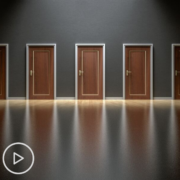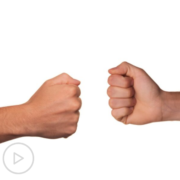Is It Safe? Breaking Down the Clinical Trial Process
The idea of a clinical trial can be intimidating and confusing for many patients. Dr. Sangmin Lee explains the phases of clinical trials, including the safety protocols in place to protect patients.
Dr. Sangmin Lee is a hematologist-oncologist specializing in blood disorders and blood cancers at Weill Cornell Medicine and New York Presbyterian Hospital.
See More From The Fact or Fiction? AML Series
Related Resources

|

|

|
Transcript:
Patricia:
What is the process for getting medicine to patients during clinical trials?
Dr. Lee:
So, clinical trials are basically what’s needed to prove that drugs work. So, a lot of times, we test drugs in a test tube in AML cell lines, and they show great promise. But just because a drug works in a test tube setting, doesn’t actually mean that it will work in humans, because human bodies are much more complicated. So, we need to test promising drugs in humans to make sure they are safe and effective.
And that’s what the purpose of clinical trials are. Once they demonstrate safety and efficacy, then a drug then gets to be approved, and is available commercially. So, that’s the purpose of clinical trials.
To be involved in clinical trials, what it involves is, basically, you have to meet a sort of criteria, called eligibility, because different clinical trials have different criteria for selection. So, we have to look into that. And then, once you fit an eligibility or selection criteria, then you typically undergo certain diagnostic tests to enroll on a clinical study. And then, you get whatever drug or intervention that is designed to test in that setting.
So, there are numerous steps to actually enroll in a clinical study.
Patricia:
And like you mentioned, there’s a long way between rat studies and human trials. What are the phases of clinical trials?
Dr. Lee:
So, there are three phases for clinical trials, commonly. There’s phase one, and phase two, and phase three. Phase one is the earliest part of the clinical trial process. So, goal of a phase one study is to make sure a drug is safe in a human. So, phase one studies are usually the first time that you are testing the drug in humans, and the main purpose is to demonstrate that it’s safe. So, typically, in a phase one study, typically, you test a drug at a lower dose or dose levels to demonstrate safety. What it means is that you’re enrolling a few patients at a time.
Once a drug is proven to be safe, then you move on to phase two, which is basically testing the drug in more patients. And the purpose of phase two is to get a preliminary assessment of how effective a treatment would be.
So, typically, a phase two study involves many more patients in that setting. And then, if a phase two study shows that a drug is very promising, then the drug may move on to phase three, where, basically, in phrase three, you are comparing one intervention or a drug compared to the standard of care. And, typically, in a phase three setting, a computer decides randomly which intervention you get, whether it’s an intervention or new drug versus standard of care. And standard of care may include either placebo or chemotherapy intervention, that is standard of care. So, it’s not always placebo in phase three.




